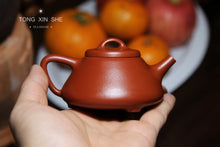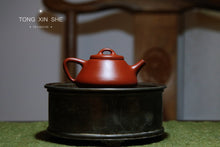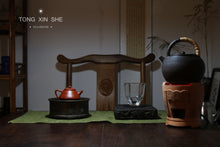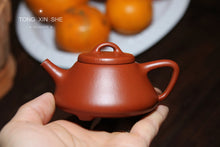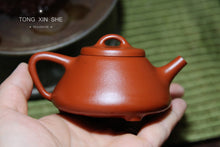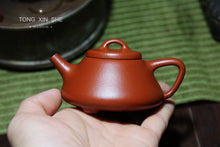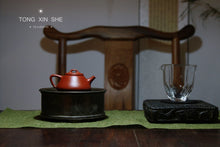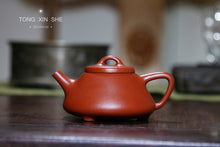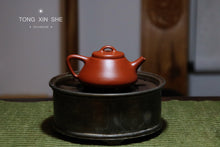
SHI Piao teapot, this is a classic style among the purple sand teapots. It has been improved by many people and is subdivided into Ziye stone spoon, Jingzhou stone spoon, Honghua stone spoon, Hantang stone spoon, etc. Out of a source, today I will share 2 hand-made Zi Ye Shi Piao Zhu Ni teapots with all tea friends, with a capacity of 120cc (because the number of lnstagram characters is limited, so I will write the remaining introduction on my website and comment area, welcome everyone Tea friends learn and communicate together)
"Shi Piao" was originally called "Shi Piao". "Chuan" changed from metal utensils to pottery. It was first seen in the poem "Testing Garden Tea" by Su Shi, a scholar of the Northern Song Dynasty: "Let's learn from the public's name and make a name for Qin, and the brick furnace and stone go with each other." Su Dongpo changed the metal "Chuan" to stone " "Cho", which is closely related to the tea ceremony at that time. Su Dongpo was demoted to teach in Shushan, Yixing, and found that the local purple sand pot tastes better than copper and iron utensils, so he used local materials and designed a teapot imitating the metal hanger. There is both "liu" (pot spout) and "liang" (pot lift) of the sand pottery "Chau" used to make tea. It can be said to be the earliest purple sand "Shicho" pot. From the Shichou pot that has been handed down to the world, it has undergone great changes to the period of Chen Mansheng and Yang Pengnian, and it has become more literate and artistic. The main features of "Mansheng Shichou" are that the top is small and the bottom is large, the center of gravity is sagging, and it is stable to use. Compared with "Zizhan Shichuan", although they are both made by Peng Nian, the former is more plump and rich, while the latter is sturdy and clumsy. This may be due to people's personality. According to the above performance, when will the purple sand "Shi Piao" be called "Shi Piao"? This should be said from the period of Gu Jingzhou, Gu quoted the ancient text "Three thousand weak water, only drink one scoop", "Shi Piao" should be called "Shi Piao", from then on both sides are called stone scoop pot.
Today I am sharing this Zhu Ni Zi Ye Shi Piao teapot. The shape of this pot clearly shows the fluidity and dexterity of the triangular shape. It is a triangle, the three elliptical feet also form a triangle, and the flow, the handle and the body tube also form a triangle. These three-dimensional and organic groups are assembled together. Each line is as sharp as a knife, refreshing and powerful.
Founder of Zi Ye Shi Piao Teapot: Qu Ziye Original name: Qu Yingshao (1778-1849), courtesy name Bizhu, Haoziye, also named Moonpot, a native of Shanghai, born in the Jiaqing era of Qing Dynasty, very good in poetry and prose, good at seal cutting , Good painting, Shizong Yun Nantian. He has collected and preserved a lot of antiquities in his life, and the furnishings in the house are all dedicated to the ink marks of Yi and famous figures of ancient and modern times. He made a lot of pots in his life, and he copied many of Chen Mansheng's works. He hired many potters to make various pot molds with Yixing kaolin. He painted bamboo poems on the pots by himself. , called "Qu pot", the method of making pots has not been passed down to later generations. There are two kinds of qu pots: coarse and fine: the coarse sand is made of fine workmanship; After the opening of Shanghai as a port, the Japanese searched for qu pots and brought them to the East, and a pot could be sold for dozens of silver coins. "Poems and Paintings of Pot Inscriptions" remain in the world.









